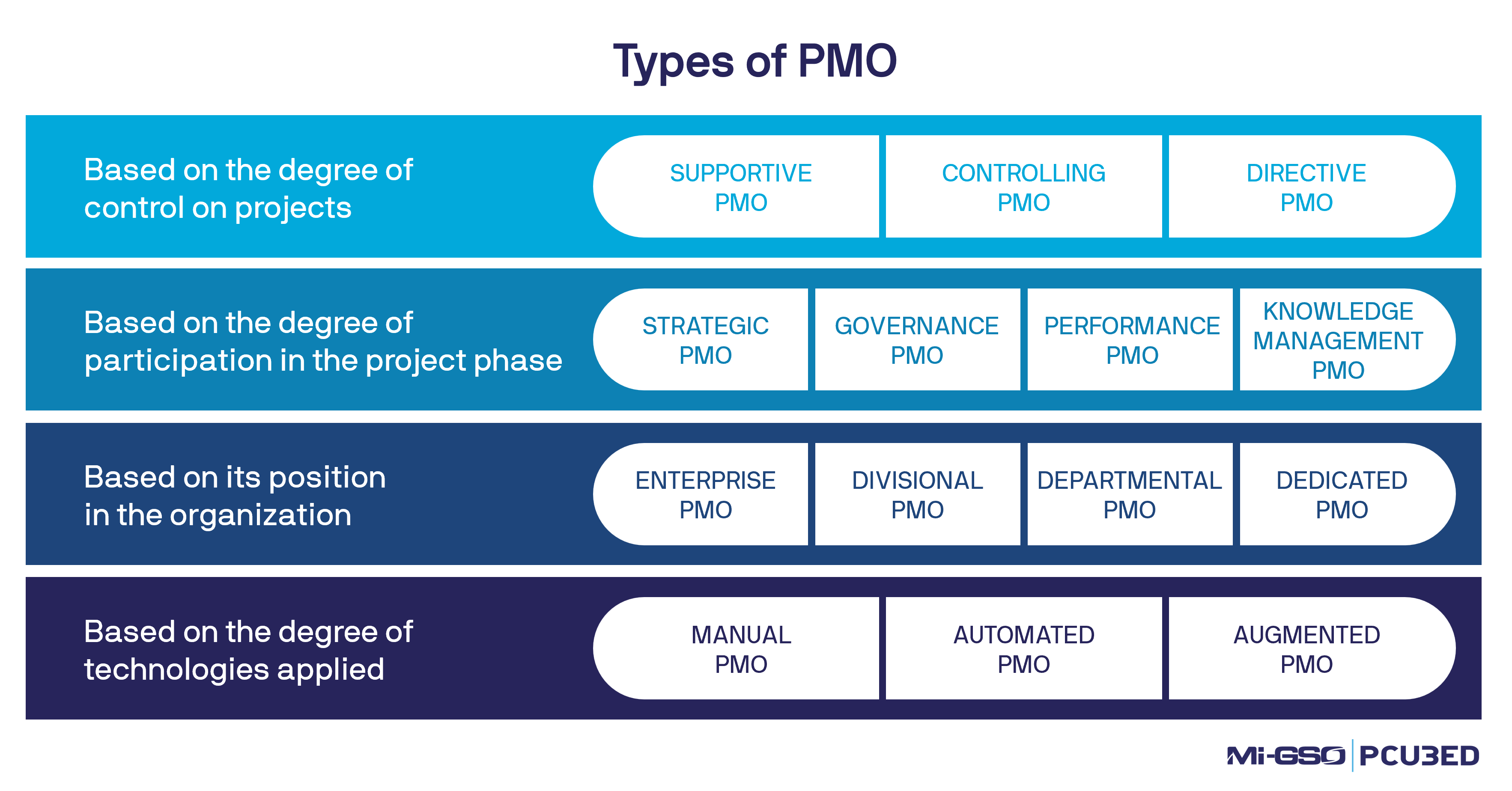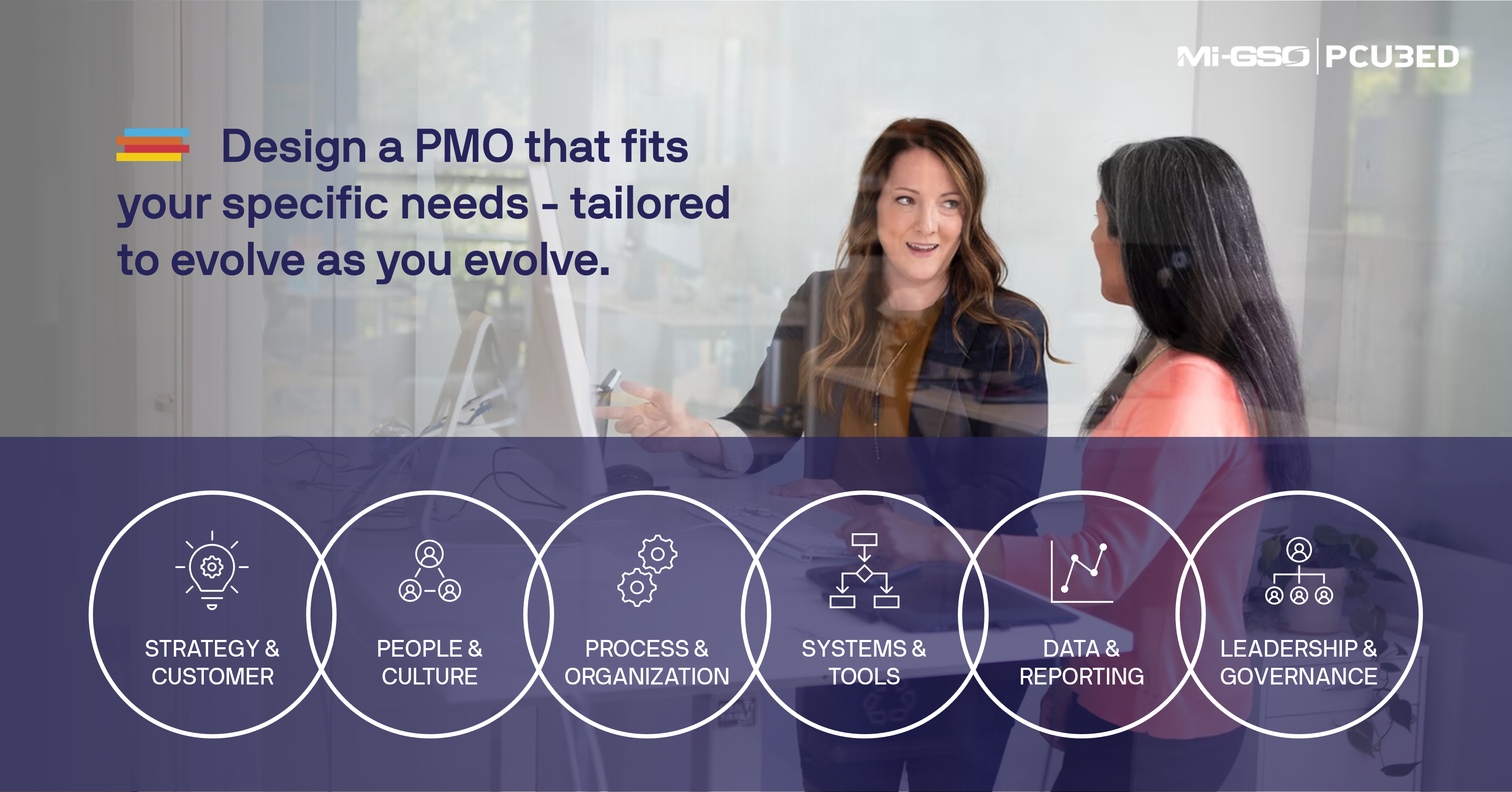Our website is not supported on this browser
The browser you are using (Internet Explorer) cannot display our content.
Please come back on a more recent browser to have the best experience possible

If you are facing challenges in project success rate, project execution efficiency, resource optimization, strategic goals alignment, etc., a high-performing PMO may be the best approach to address these challenges. However, you must think about which role and structure of PMO would fit well in your organization and your unique corporate culture.
What is a PMO? A Project Management Office is a group that exists to support the delivery of an organization’s business goals through project portfolio management. Read more in our PMO Guide.
Should it work like a consultant, a coach, a manager, a supervisor, or an auditor? And which type of PMO structure should your organization adopt? Will the structure that worked for your competitors work for you, too? Will there be any challenges in setting up or changing a new governance structure in your organization?
As specialists in PMO setup and delivery for the past 30 years, we are best placed to guide you through this self exploration and decision making journey. Here is a short summary that we hope will give you a better idea of the different types of PMO.
The models of PMO have been evolving for a long time. You may have heard terms from multiple sources/organizations, but what are the differences among them? Let’s take a look at the key factors influencing the types of PMO.
These first three types are defined by the Project Management Institute and referenced in the PMBOK, so they are frequently studied as the primary types of PMO. However, there are other types, which we identify below, that consider different criteria.
Read our case study: Maturing PPM to Improve PMO Confidence

There’s no one solution that suits for all situations, hence the best PMO structure is the one that works best for your organization and can effectively serve your needs to achieve both mid-term tactical and long-term strategic goals. The short summary above provides us a basic understanding of types of PMO, which leads to self-assessment questions, starting with:
Self-evaluation activities, including a self-assessment questionnaire, will help you to get a better understanding of your organization: What are your strengths and weaknesses in project management application? What does your organizational culture look like? What does your organization really want to achieve? What are the critical requirements/expectations for the PMO approach? What would work best for your organization?
Again, to summarize, the best PMO structure for your organization is the combination of the best choice and the best practices which work for your organization to achieve your strategic mission and goals.
Let’s expand “what’s right” a little bit. “Right” means: set up the right structure with the right roles, place it in the right position within the organization, pick the right candidates for the PMO roles, equip the PMO with the right tools, choose the right metrics to measure both PMO operation and portfolio/program performance, deploy and iterate PMO at the right time, etc. Most importantly, start with choosing the right partner to take the best approach that is tailored for you right from the very beginning of your PMO journey.

Developing and deploying a PMO for an organization is definitely not a small task. It is a strategic initiative that can be delivered incrementally in order to onboard all levels of the organization. This type of change journey is important to ensure full support for adopting the new structured ways to supervise and manage projects across the organization.
Our 30+ years of experience specializing in Project Management consulting and PMO as a Service allows us to continuously refine our own approach to truly and fully understand our clients. Before making any recommendation for the right PMO solution to the clients, we combine our understanding of your organization in aspects of efficiency, effectiveness, value realization and future vision, with industry best practices in terms of people, process and tools. This way, we prepare our clients to proactively respond to any upcoming uncertainties and changes and to embrace new challenges in today’s fast spinning world.
This article was written by
Elizabeth Peiwen Li.
Loved what you just read?
Let's stay in touch.
No spam, only great things to read in our newsletter.
We combine our expertise with a fine knowledge of the industry to deliver high-value project management services.
MIGSO-PCUBED is part of the ALTEN group.
Find us around the world
Australia – Canada – France – Germany – Italy – Mexico – Portugal – Romania – South East Asia – Spain – Switzerland – United Kingdom – United States
© 2024 MIGSO-PCUBED. All rights reserved | Legal information | Privacy Policy | Cookie Settings | Intranet
Choose your language
Our website is not supported on this browser
The browser you are using (Internet Explorer) cannot display our content.
Please come back on a more recent browser to have the best experience possible
